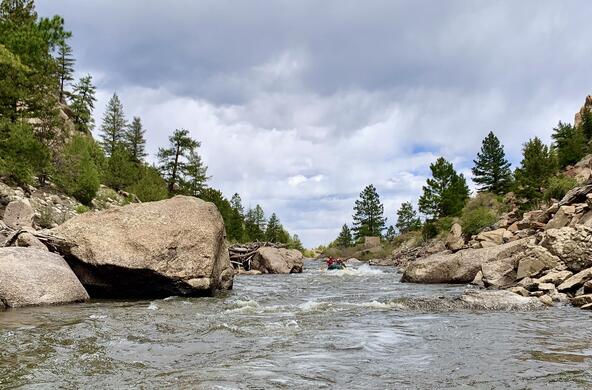Every now and again someone writes me saying that the real source of rising carbon dioxide (CO2) in Earth’s atmosphere is not human combustion of fossil fuels but volcanic emissions. There are several reasons why this cannot be the case.
First, the emissions from fossil fuels are well known from economic statistics, meaning we know fairly precisely how much oil, natural gas, and coal are traded annually and that the total emission of CO2 from these contains about 10 billion metric tons of carbon each year.
Meanwhile, a few brave souls have measured the emissions from active volcanoes, summing to 0.10 billion metric tons per year—or about 1 percent of the fossil fuel emission.
Now, you may say it is not the ongoing emissions from volcanoes that matter, but rather the emission from the occasional large volcanic eruptions that occur only every few years and are difficult to measure. Problem is, if such a large volcano was a source of a significant amount of CO2 added to Earth’s atmosphere, you’d see a “blip” in the atmospheric concentration of CO2 associated with its eruption. There are no such anomalous blips in the record, only the steady annual increase from fossil fuel emissions since 1957, with a seasonal oscillation that is linked to plant photosynthesis. (Plants remove carbon dioxide from the atmosphere during the growing season.)
Finally, there is a subtle characteristic of atmospheric CO2 that can dismiss volcanoes as a significant source. The carbon in CO2 comes in two forms, or isotopes. The most abundant is 12C, but a small fraction of the CO2 molecules contain carbon that has an extra neutron, or 13C. The carbon dioxide from volcanoes shows no special proportion of these two forms of carbon dioxide, whereas the CO2 from fossil fuels is depleted in 13C as a result of their origin from plant photosynthesis.
The rising content of CO2 in Earth’s atmosphere is associated with a slow decline in 13CO2 since the beginning of the Industrial Revolution—consistent its origin from fossil fuel combustion that dilutes the atmospheric content of 13CO2 as it is burned. If volcanoes were the main source of rising CO2, there would be no trend in 13CO2.
The conclusion is unequivocal: fossil fuels have made the most significant contribution to rising atmospheric CO2 during the past couple of hundred years.
References
Chiodini, G. 2011. First 13C/12C characterization of volcanic plume CO2. Bulletin of Volcanology 73: 531-542.
Morner, N.A. and G. Etiope. 2002. Carbon degassing from the lithosphere. Global and Planetary Change 33: 185-203.








